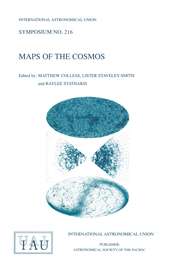No CrossRef data available.
Article contents
New Detection of X-Ray Pulsar Nebulae by ASCA
Published online by Cambridge University Press: 25 May 2016
Extract
X-ray images of rotation-powered pulsars were examined using ASCA Gas Imaging Spectrometer (GIS). The data sets are taken from those available in the ASCA public archive in the performance verification (PV) phase and the guest-observing (GO) phase 1. We detected diffuse X-ray sources in the vicinity of nine pulsars including five new detections. There are large variety in their morphology and spatial size. The high probability of finding such diffuse sources around pulsars suggests that they exist universally for all the active pulsars, and that they are powered by the pulsars. We propose that the pulsar-powered nebula is a good probe to measure the otherwise invisible energy flux dissipating from a pulsar into the surrounding space.
Information
- Type
- Session 1: Plasma and Fresh Nucleosynthesis Phenomena
- Information
- Copyright
- Copyright © Kluwer 1998

